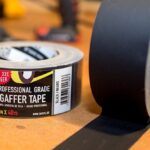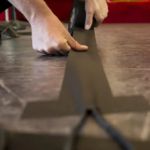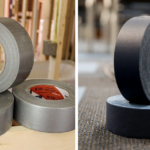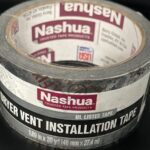When most people need tape, they go for plain old sticky or duct tape. After all, if it sticks, it works, right? This couldn’t be any further from the truth, and there are hundreds of different tape types used in as many applications.
They’re made with different levels of stickiness or adhesion and come in different materials. And choosing the right tape all depends on how you intend to use it. One great example of an outstanding tape that not many remember to use is film tape, also known as gaffer.
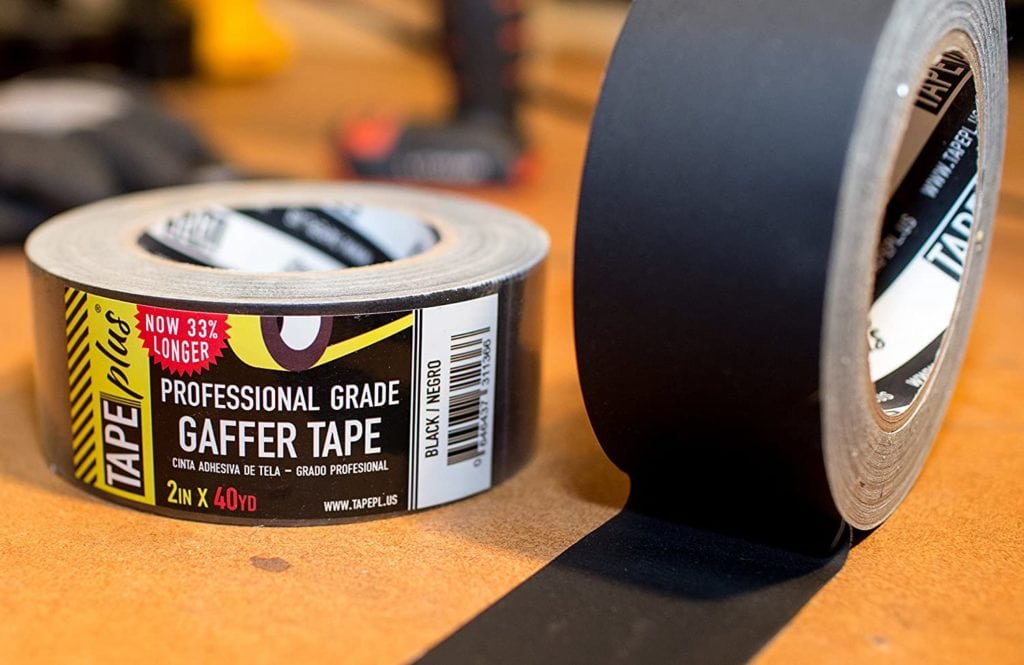
What is Gaffer Tape?
It’s the kind of tape that is both specialised and still works a treat in different settings. This is the tape most often found in the entertainment industry, especially on film sets. It is flexible, has high holding pressure-sensitive adhesive that sticks to different surfaces equally well, and is easy to apply.
In addition, the tape is virtually tear-proof when applied, doesn’t leave any residue on removal, and doesn’t reflect light. These qualities make it the ideal choice for cable bundling and ‘gaffing’ or sticking cables to the ground. It also makes user-friendly gaffer tape especially useful in setting up (and moving) props within the set.
What Sets it Apart from other Tapes?
Made from organic cloth (with a range of backer materials), and a natural or synthetic rubber adhesive, gaffer tape is an eco-friendly choice, with low levels of harmful volatile organic compounds (VOCs) which makes it safe to use in any application. It has very high tensile strength owing to the tightly woven cloth, and tape strengths can be specified to your needs.
In addition, it stands well against abuse, and won’t puncture from heavy impact, or crack under higher temperatures. And lastly, being waterproof, gaffer tapes work in areas where liquids and humidity can pose unwanted problems.
The icing on the cake is that it’s very easy to use. It’s a breeze to tear, sticks extremely well, conforms to uneven surfaces and yet there’s no residue left behind when it’s no longer needed and removed. In filming and video sets, where props and cablings are moved around often, this is a godsend.
Where is Gaffer Tape Used?
A few rolls of gaffer tape can quickly transform a studio, filming set, or stage. The tape is great for mounting different types of lights, cables, and equipment to a variety of surfaces. And they’ll hold until taken off. Specifically, when bundling cabling runs, the non-reflective variants won’t mess up a scene, so cables are seamlessly hidden out of sight.
The versatility doesn’t end here. With high tensile strength and superior adhesion to something like duct tape, gaffers’ tape can be used to secure heavy objects, like bulky wide-angle lenses to camera bodies. Tapes are also effective for temporary uses on the set, like actor and prop markings.
Outside entertainment, the tape is used for quick fixes in and around the house. Clear variants are used in splicing fabrics and temporary repairs to cloth car seats. And the added water resistance proves handy in many situations.
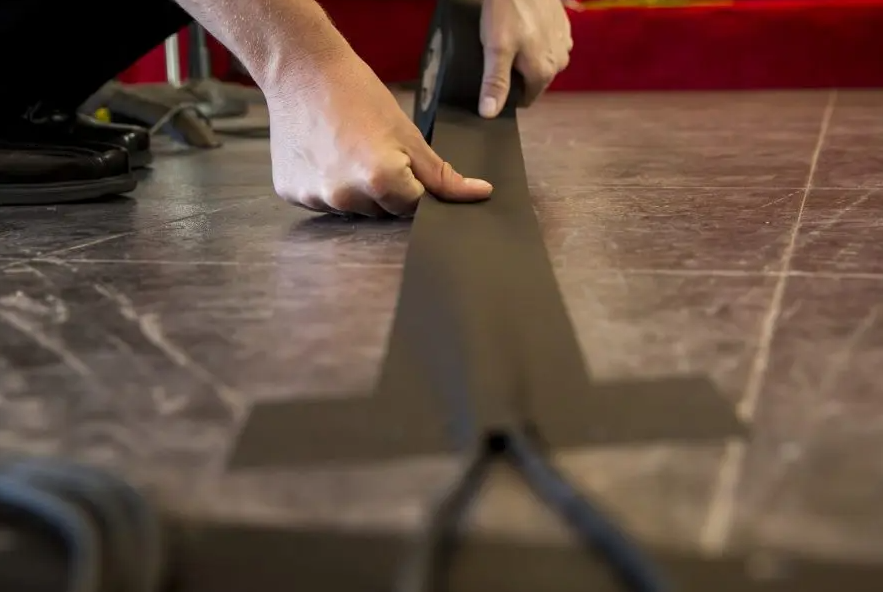
Types of Tapes
• Coloured Gaffer Cloth Tape
Tapes can be sourced in different colours, for instance when they need to fit in with the settings. Brown film tape is good for hiding cables and other items on wooden stages. Other colours are used for colour-coding of cables, safety markings, or labelling purposes. Silver, red, yellow, green, and brown are the most common.
• Matte or Nashua Tape
This is one of the more widely used varieties, especially with cabling in film and stage work. It doesn’t reflect light, so it won’t bounce off light in a darker setting. Matte tape comes in black or white.
• Gloss Tape
Highlighting where cables are set, and to avoid injuries from tripping, is done with gloss tape. Gloss or reflective tapes are also good in hazardous areas with low visibility. Pink, yellow, green, and orange tapes are all available.
• Clear Tape
This kind of tape is ideal for labelling with coloured markers, as well as repair work in cloth and fabric.
• Heavy Duty Tapes
Tapes with higher tensile strength, better heat and water resistance, and high adhesion are good for wrapping and sealing purposes in different industries. These can also have additional backer materials, particularly metallic foils.
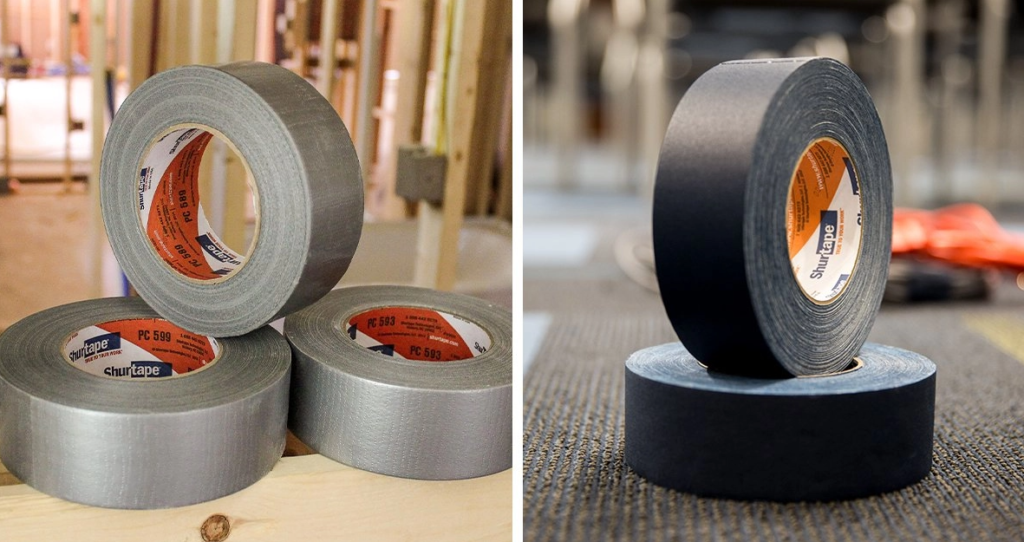
Compared to Other Tapes
Gaffer, i.e. film tape shouldn’t be confused (or replaced) with ordinary duct tape. The cloth material ensures it doesn’t leave a residue on removal as happens with PVC tapes like duct or sticky tape. The adhesive is of much better quality too.
Cloth also makes it considerably more durable. It has better heat handling, so won’t melt or catch fire when holding heated lights or gear in place. And won’t soak up liquids that can cause safety risks. The robustness is further enhanced with various backer materials, making specialist tapes appropriate for more demanding industrial applications.
Widths and Lengths
Tapes can be sourced in various lengths (25, 40 and 50 metres are common), and in a standard width of 50mm. An exception is gaffer tunnel tape used to conceal wider lengths of cabling, and this comes in at 150mm.
Gaffer and various high-quality industrial tapes are sold through packaging outlets, photo and video retailers, and hardware stores.

